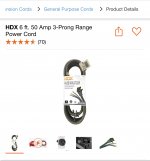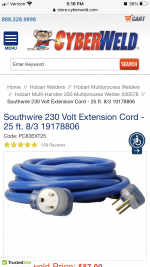Squamch
Canadian
It sounds like a little general purpose MIG welder will fulfill your needs just fine, IMHO. I'm not an expert welder, but I've been welding since high school and worked as a mechanic/welder for years when I was in my 20's and 30's. I've never owned a welder myself, so I did a bunch of research to try to figure out a suitable machine for my home garage use.
I ended up with 180 Amp Lincoln MIG welder. Home Depot sells this exact welder (except it is called the "Weld Pak" 180 instead of "Easy Mig" 180) for $750 locally It is a 220v machine, so I had to add a circuit in the garage. That was easy, but it cost about $40 for the breaker, receptacle and wire. I'm into everything including the new 220v circuit, a cart, and a 40 cf bottle full of gas for about $1050. There are definately cheaper and easier ways to get started welding, but I won't need anything more than this for what I'm doing, and it sounds a lot like what you will be doing.
I think you mentioned that you live in Boise. If you want to come over and try it out, bring beer. I drink Coors Light. I'm near Lake Hazel & Cloverdale.
Careful with the home depot welders. I bought a migpak 5000HD used, turned out that HD doesn't mean heavy duty, it means only sold at Home Depot. Its not gas ready like the weldpak180, so you need to buy more bits and pieces if you want to run gas.
I didn't take a class post high-school, but my best friend of 20ish years is a welder, has done everything from red iron to submarines to exposed stair stringers. Having him over my shoulder critiquing has taught me a lot.

 ):
):


